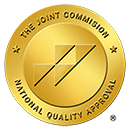National Breast Cancer Awareness
Breast cancer is the second most common kind of cancer in women. About 1 in 8 women born today in the United States will get breast cancer at some point.
The good news is that most women can survive breast cancer if it’s found and treated early. A mammogram – the screening test for breast cancer – can help find breast cancer early when it’s easier to treat.
National Breast Cancer Awareness Month is a chance to raise awareness about the importance of early detection of breast cancer. Make a difference! Spread the word about mammograms and encourage communities, organizations, families, and individuals to get involved.
How can National Breast Cancer Awareness Month make a difference?
We can use this opportunity to spread the word about steps women can take to detect breast cancer early.
Here are just a few ideas:
- Ask doctors and nurses to speak to women about the importance of getting screened for breast cancer.
- Encourage women ages 40 to 49 to talk with their doctors about when to start getting mammograms.
- Organize an event to talk with women ages 50 to 74 in your community about getting mammograms every 2 years.
The Basics: Overview
Breast cancer is the second most common kind of cancer in women. About 1 in 8 women born today in the United States will get breast cancer sometime during her life.
The good news is that mammograms can help find breast cancer early. Most women can survive breast cancer if it’s found and treated early.
How often should I get mammograms?
- Women ages 40 to 49
Talk with your doctor about when to start getting mammograms and how often to get them. - Women ages 50 to 74
Get mammograms every 2 years. Talk with your doctor to decide if you need them more often.
What is a mammogram?
A mammogram is an x-ray of the breast. It lets your doctor see changes that can’t be felt during a breast exam. Mammograms use a very low level of x-rays, which are a type of radiation. A mammogram is very safe.
When you get mammograms, the nurse will place your breasts, one at a time, between 2 plastic plates and take pictures of them. Mammograms can be uncomfortable for some women, but they don’t hurt.
It takes about 20 minutes to get mammograms. Learn more about mammograms.
What is breast cancer?
Abnormal (unusual) cells in the breast can turn into cancer. Breast cancer can spread to other parts of the body.
Talk with your doctor or nurse if you notice any of these changes:
- A lump in the breast or underarm (armpit)
- A change in size, shape, or feel of the breast
- Fluid (called discharge) coming out of a nipple
What if the doctor finds something wrong with my breast?
Mammograms let the doctor or nurse look for small lumps inside your breast. If a lump is found, you will need other tests to find out if it’s cancer.
The doctor or nurse may take a small bit of tissue from the lump for testing. This is called a biopsy (“BY-op-see”).
Take Action: See Your Doctor
Talk with your doctor about when and how often to get mammograms.
Ask the doctor about your breast cancer risk.
- Tell your doctor if anyone in your family has had breast or ovarian cancer.
- If you have a family history of breast or ovarian cancer, talk with your doctor about genetic testing.
- Ask about ways you may be able to lower your breast cancer risk.
Together, you and your doctor can decide what’s best for you.
Take Action: Cost and Insurance
What about cost?
The Affordable Care Act, the health care reform law passed in 2010, covers mammograms for women over age 40. Depending on your insurance plan, you may be able to get mammograms at no cost to you.
Check with your insurance company to find out what’s included in your plan. For information about other services covered by the Affordable Care Act, visit HealthCare.gov.
If you don’t have private insurance, you can still get mammograms.
- Find a program near you that offers free or low-cost mammograms.
- Find out how often Medicare pays for mammograms.
Take Action: Healthy Habits
Get support.
Use these tips to get support when you get mammograms.
- Ask other women who have had mammograms about what to expect.
- When you go to get mammograms, ask a family member or friend to go with you.
Make sure to ask when you will get your mammogram results. When you get the results, ask the doctor or nurse to explain what the results mean.
Get active.
Getting active increases your chances of living longer and helps you stay at a healthy weight. Physical activity may help prevent breast cancer, colorectal cancer, heart disease, and type 2 diabetes.
Get your well-woman visit.
Get a well-woman visit every year. Use this visit to talk with your doctor or nurse about important screenings and services to help you stay healthy.




